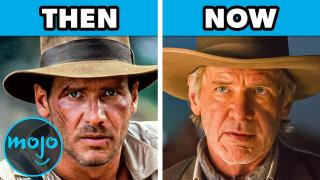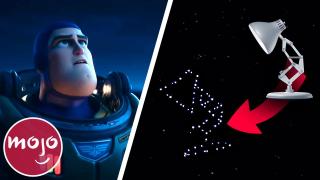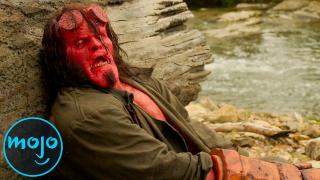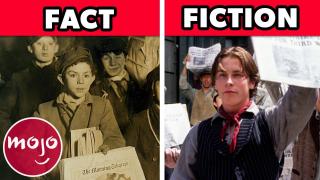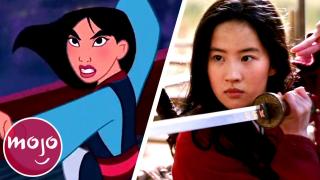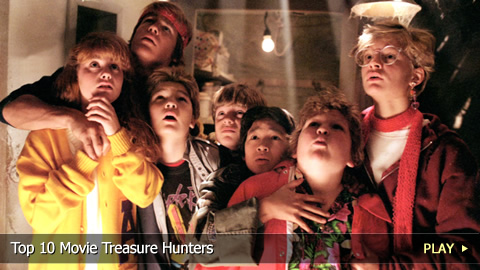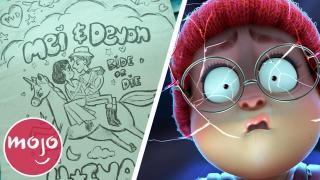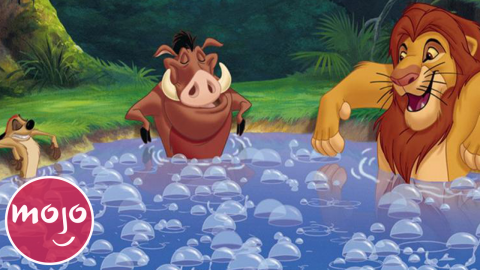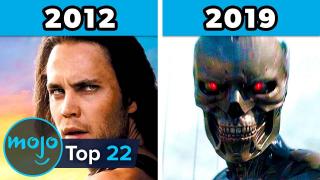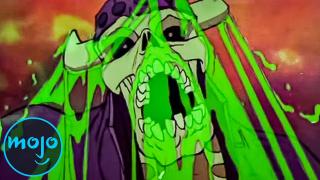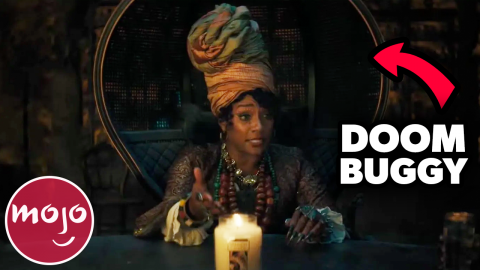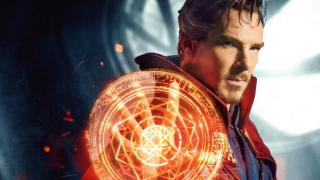Top 20 Biggest Disney Movie Flops
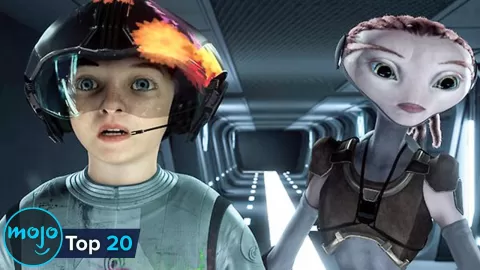
#20: “Indiana Jones and the Dial of Destiny” (2023)
Indiana Jones Cast: Where Are They Now?
“Indiana Jones” is one of the most distinguished blockbuster brands of all time. Disney were understandably betting big with “The Dial of Destiny”. After all, the franchise’s first theatrical release under their banner boasted a budget of $295 million. Unfortunately, Indiana Jones’s pursuit of a time-traveling artifact grossed just under $175 million at the domestic box office. Unfortunately, “The Dial of Destiny” came along during an oversaturation of nostalgic cinema and summer blockbusters. Fans couldn’t excuse the movie’s monumental budget yet menial thrills. Even with a strong international gross, additional expenses amounted to a $100 million loss for Disney. It looks like Indy wasn’t quite the treasure they were hunting for.
#19: “Lightyear” (2022)
Top 10 Things You Missed in Lightyear
Pixar’s flagship “Toy Story” brand has been an otherworldly success for generations. Fans had astronomical hopes for “Lightyear”, the sci-fi blockbuster that supposedly inspired the Buzz Lightyear action figure. It’s hard to imagine a franchise being built on its box office. The domestic gross was under $120 million against a $200 million production budget. The film did face early controversy for voice actor Tim Allen’s absence and its LGBT representation. Though Disney’s refusal to censor the latter is admirable, it cost the film’s release in some countries. More importantly, though, audiences were disappointed by the convoluted plot and betrayal of “Toy Story” lore. With a $106 million final loss, “Lightyear” just couldn’t reach the stars.
#18: “The Country Bears” (2002)
Top 10 Biggest Movie Flops of 2019 (So Far)
If “Pirates of the Caribbean” proved anything, it’s that movies based on theme park attractions can work. A year before Disney struck gold with Jack Sparrow, though, they brought the Country Bear Jamboree to the big screen. “The Country Bears” is far from the most expensive film on this list, costing $35 million to make. Yet, even with a modest budget, it still couldn’t turn a profit. Grossing roughly $18 million overall, “The Country Bears” proved too weird for kids, too juvenile for adults, and too dopey for modern audiences in general. To be fair, Christopher Walken’s bizarre performance was beyond priceless though.
#17: “Newsies” (1992)
Top 10 Things Newsies (1992) Got Factually Right & Wrong
In 1992, composer Alan Menken took part in one of Disney’s biggest hits ever: “Aladdin.” That same year, however, Menken also contributed to one of Disney’s lowest-grossing live-action movies ever: “Newsies.” A musical about the Newsboys Strike of 1899, “Newsies” made under $3 million on a $15 million budget. Despite being a failure upon initial release, the film would gain a dedicated following on home media. It even inspired an acclaimed Broadway show, which resulted in Menken and Jack Feldman taking home their first Tony Awards. The moral of the story: just because something doesn’t succeed at first doesn’t mean it’ll never amount to anything.
#16: “The New Mutants” (2020)
Top 10 Biggest Disney Movie Flops
Disney’s acquisition of Fox in 2019 brought them the film rights for “X-Men”. However, it also meant taking on Fox’s spin-off “The New Mutants”, a horror-style origin story for super-teens in a hospital. Fox had made director Josh Boone tone down horror elements, then wanted extensive reshoots to add more horror after the success of 2017’s “It”. Post-merger, Boone deemed the cast too old for reshoots. While the tentpole project cost under $80 million, it only made $50 million worldwide. COVID-19 obviously hurt “The New Mutants”. But reviews of a disjointed final cut confirmed audiences’ lack of confidence. After the box office debacle “Dark Phoenix”, what was supposed to be an insignificant spin-off buried the franchise. Let’s hope Disney’s new-new mutants have better luck.
#15: “A Wrinkle in Time” (2018)
Does 'A Wrinkle in Time' Live Up to the Hype? - Spoiler Free Review! Mojo @ The Movies
With a star-studded cast, and acclaimed director Ava DuVernay at the helm, there was every reason to be excited for this adaptation of Madeleine L'Engle’s classic science-fantasy novel. “A Wrinkle in Time” became the first live-action blockbuster directed by a Black woman to gross over $100 million. Alas, it didn't get much further at the box office. With additional expenses, Disney lost roughly the same amount as the movie's huge initial budget. Their earlier TV adaptation was of course technically topped with this magical journey through space. But not even nostalgia could endear viewers to the superficial, sentimental writing. While DuVurney’s “A Wrinkle in Time” may be remembered for its cultural significance, Disney missed the science in making a big-budget epic for younger viewers.
#14: “Mulan” (2020)
Top 10 Differences Between Mulan (1998) & Mulan (2020)
Niki Caro’s “Mulan” could have been as successful as any live-action remake of a Disney animated classic. But with the COVID-19 pandemic delaying its release, the studio tried an experiment. While “Mulan” went to theaters around the world, it was domestically released on Disney+ with an on-demand fee of $30. As steep as that price was for some subscribers, the streaming service eventually offered the title at no extra charge. Mixed reviews and controversy surrounding Liu Yifei’s views on China-Hong Kong relations further limited its appeal. The $200 million epic ultimately grossed $70 million. While it was bigger on streaming, Disney still lost over $140 million. Times were tough for the “Mulan” remake, not to excuse its quality or distribution strategy.
#13: “Around the World in 80 Days” (2004)
Top 20 Movie Flops of the Last Decade
It’s hard to compete with the Oscar-winning 1956 adaptation of Jules Verne’s seminal adventure novel. Disney’s Buena Vista Pictures brought “Around the World in 80 Days” into the 21st century, in all the wrong ways. The massive production couldn’t make up for the lame anachronistic humor and many liberties with the source material. Between fans of Verne’s classic and those unfamiliar with it, the movie grossed just over $70 million against a $110 million budget. It was one of the priciest flops in Hollywood history. Jackie Chan alone cost over $18 million. “Around the World” doesn’t even have much of a cult following with its reviews. Passepartout could have told Disney that technical innovation means nothing in a poorly navigated project.
#12: “Jungle Cruise” (2021)
The Jungle Book (2016) VS Mowgli (2018)
A classic Disney park ride’s big-budget movie spent 17 years in development. It’s a shame that “Jungle Cruise” was completed in time for the COVID-19 pandemic. As with other major movies at the time, it was simultaneously released in theaters and on Disney+ Premier Access, with a $30 premium fee. Dwayne Johnson and Emily Blunt’s $200 million treasure hunt may have been particularly worthy of the big screen. But $221 million in receipts wasn’t enough after additional expenses. The $66 million gross on streaming only put a dent in box office losses. One of Johnson’s all-time biggest bombs, while anticipated, was devastating. A “Jungle Cruise” sequel is still in development, but Disney can’t afford for it to be too adventurous.
#11: “Treasure Planet” (2002)
Top 10 Movie Treasure Hunters
This early 2000s animated feature crashed and burned, making $109.6 million on a $140 million budget. Unlike “Home on the Range,” though, the science fiction adventure actually had critical praise and an Oscar nomination on its side. So why did the film leave such a small impression at the box office? Maybe the idea of “Treasure Island” in outer space was too out-there for mainstream audiences. The fact that it had to compete with Harry Potter probably didn’t help either. In any case, “Treasure Planet” was sunk, ultimately losing an estimated $85 million.
#10: “Tomorrowland” (2015)
On paper, “Tomorrowland” seemed like a surefire success. George Clooney is one of the most charming actors in the business and director Brad Bird has made one classic after another. Despite all the talent involved, however, this futuristic mystery just didn’t entice audiences. What’s worse, Disney spent an estimated $330 million on the film’s production and marketing campaign. On a visual level, you can certainly see where most of that money went. In terms of storytelling, though, many felt the film failed to take flight. By the end of its box office run, “Tomorrowland” brought in just over $200 million, losing the studio somewhere between $120 million and $140 million. Ouch.
#9: “The Alamo” (2004)
Top 10 Disney Channel Movie Songs That Didn't Have to Go THAT Hard
Not even John Wayne’s recreation of the Battle of the Alamo could rise above financial and critical disappointment in 1960. History more than repeated itself when Buena Vista Pictures released its own all-star dramatization. Against an obviously massive budget, John Lee Hancock’s “The Alamo” grossed just over $25 million worldwide. As financially rough as 2004 was for Disney, this marked one of the biggest box office bombs of all time. You have to understand the historical context of a difficult production, a spring release, and post-9/11 propaganda fatigue. Of course, the dull and excessive movie’s lack of appeal is evident. Besides its great defeat at the box office, there's little cause to remember Disney's “The Alamo”.
#8: “Turning Red” (2022)
Top 10 Most Relatable Turning Red Moments
One of Disney’s most genuinely unjust flops was the Pixar-produced “Turning Red”. The coming-of-age fantasy won rave reviews, especially for its cultural representation and honesty about puberty. Certainly, such content in a children’s movie sparked controversy. But with COVID-19, Disney’s real error was domestically debuting the big-budget movie on Disney+... without a premium fee. The international theatrical release raked in just over $21 million. Disney sacrificed a blockbuster hit, but surely didn’t foresee a roughly $170 million loss. This prompted a theatrical re-release in 2024, which didn’t really help. “Turning Red” had already been widely seen - and is poised to become a classic.
#7: “The 13th Warrior” (1999)
Top 10 Underrated Disney Animated Movie Sequels
Touchstone Pictures went exceptionally big in adapting Michael Crichton’s fictional account of Ahmad ibn Fadlan’s Nordic travels. Some reports suggest that with marketing, “The 13th Warrior” cost up to $160 million. After disastrous test screenings, the film was delayed and recut, but upon release, reviews were still lackluster. The film ended up grossing just over $60 million, costing Disney twice that amount. It was such a bomb that legendary actor Omar Sharif temporarily retired. Though Disney has since lost bigger, the otherwise forgettable “The 13th Warrior” is now mostly recognized as one of the biggest flops of its era.
#6: “The Lone Ranger” (2013)
Top 22 Biggest Box Office Fails of Each Year (2000 - 2021)
Disney had high hopes that “The Lone Ranger” would be their next “Pirates of the Caribbean.” Heck, they even enlisted the same director and star behind that blockbuster franchise. Unfortunately for the studio, this western was a bomb of epic proportions. You wouldn’t think that Disney would throw too much money at a movie based on an old-school radio show. For some reason, though, they decided to spend $225 million on production costs, as well as $150 million on marketing. Grossing $260.5 million overall, “The Lone Ranger” alienated audiences with its relentless runtime, muddled plot, and the controversial casting of Johnny Depp as Native American Tonto.
#5: “The Black Cauldron” (1985)
Top 10 Most Brutal Disney Movie Deaths
Following Walt Disney’s death in 1966, the animation studio entered one of its darkest eras financially. But this fantasy adventure was Disney’s biggest box office letdown yet. At the time of its release, “The Black Cauldron” was the most expensive animated feature ever with a price tag of $44 million. The film didn’t even make back half of its substantial budget, accumulating a total of $21.3 million. As if that’s not bad enough, it actually made less money than “The Care Bears Movie,” which came out that same year. Although it has a somewhat infamous reputation, “The Black Cauldron” has also achieved a cult following in recent years. So perhaps audiences missed out back in the ‘80s.
#4: “Haunted Mansion” (2023)
Top 10 Things You Missed in Disney's Haunted Mansion Movie
Despite negative reviews, “The Haunted Mansion” with Eddie Murphy was a commercial and cult hit. Twenty years later, a second adaptation of the Disney theme park ride was dead on arrival. Justin Simien’s “Haunted Mansion” had to compete with an acting strike and the “Barbenheimer” theatrical event. This true bomb fell way short of its $150 million budget, becoming the lowest-grossing major release in a year that cost Disney roughly $1 billion. It didn’t help that the convoluted ghost story didn’t give critics chills. And audiences didn’t know what to make of the too silly horror and too dark comedy. 2023’s “Haunted Mansion” probably won’t haunt a wide fanbase, but it’s practically a curse on Disney.
#3: “Strange World” (2022)
Top 10 Incredible Facts You Didn't Know About Doctor Strange
It was a strange time for the sci-fi adventure “Strange World”. COVID-19 left audiences expecting it would soon land on Disney+ - if they even knew about it. Against polarized reviews, Disney released the movie during a crowded slate and with limited advertising. The studio also had to pull release in countries that objected to the gay protagonist. These factors and more resulted in a meager gross of just over $70 million worldwide. Disney must have seriously invested in marketing after all, as the release lost nearly $200 million. One of the biggest flops ever in Disney animation has since been subject to great debate. Of course, one should consider “Strange World”’s popularity when it came to Disney+, exactly one month into its theatrical run.
#2: “Mars Needs Moms” (2011)
Top 10 Mars Movies
People are generally divided when it comes to motion-captured animated films. Some find them visually stunning while others find them creepy. Either way, we can all agree that the style feels out of place in a wacky space comedy like “Mars Needs Moms.” Audiences could immediately sense that this movie was going to blow, leading to a dismal opening weekend. It didn’t do much better in the weeks to come, ultimately making $39 million on a massive budget of $150 million. Reaching an all time low, the film stands out as the Disney brand’s biggest financial dud to date. It also motivated Disney to close down ImageMovers Digital, a joint venture they had established back in 2007 with the film studio known as ImageMovers.
#1: “John Carter” (2012)
Top 10 John Wick Killstreaks
Over the years, Disney has taken countless risks that have paid off. Alas, for every film that succeeds against all odds, there’s a gamble that simply wasn’t worth taking. “John Carter” is one of the most notorious examples of the latter in the company’s history. On the whole, Disney spent $350 million producing and advertising this adaptation of “A Princess of Mars.” However, all the money in the world couldn’t save “John Carter” from generic characters, a clunky story, and a severe lack of originality. The film not only amounted to a $200 million write-down, but also caused Rich Ross to resign as head of the studio.


